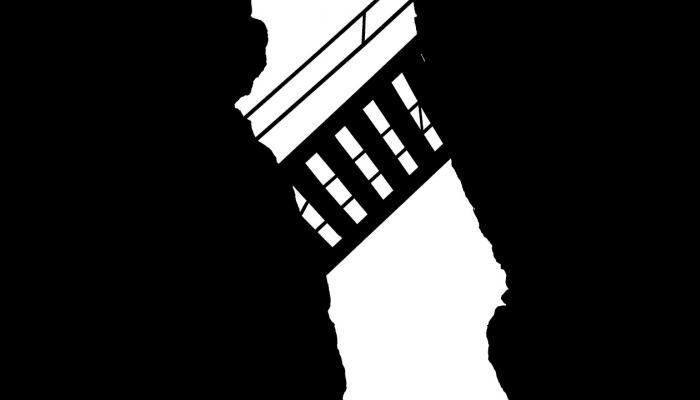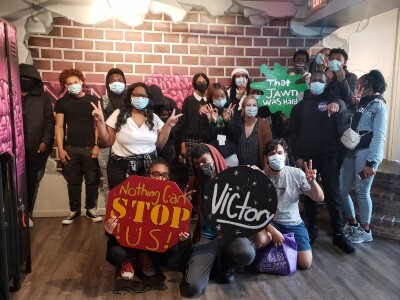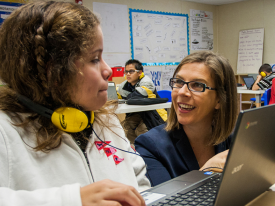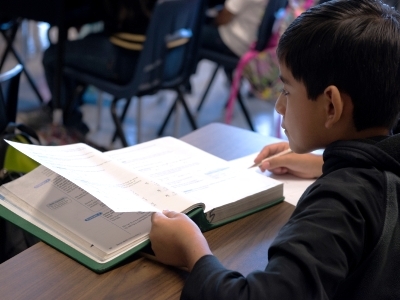Rethinking the Achievement Gap (Part 3)
Topics

Together, educators are doing the reimagining and reinvention work necessary to make true educational equity possible. Student-centered learning advances equity when it values social and emotional growth alongside academic achievement, takes a cultural lens on strengths and competencies, and equips students with the power and skills to address injustice in their schools and communities.
For those of us committed to educating disadvantaged kids, the skill set we need to help them develop goes way beyond reading and math: we need to teach them how to navigate and negotiate a world that is hostile to their very existence.
This post originally appeared on workshopschool.org on April 1, 2016.
We focus intently on the achievement gap because we see closing it as the best way to combat poverty and inequality. As I argued in Part 1 and Part 2, this gets us into trouble when we define achievement too narrowly. But it actually oversimplifies poverty and inequality even more than it oversimplifies learning.
Two articles currently posted at the Atlantic make this point in depressingly persuasive fashion. The first reminds us that inequality is about much, much more than income or even wealth, while the second documents that while Clinton-era welfare reform was hugely successful in reducing the number of people receiving public assistance, that’s not actually the same thing as helping them re-enter the workforce or otherwise get back on their feet. Welfare reform deepened extreme poverty, and (more usefully for its authors) it also made it less visible.
The leap of faith that equates test score improvement with a ticket to the middle class grossly underestimates just how hard it is to climb out of poverty in America. It is a convenient, comforting thought that if we just focus all of our energy and effort on one thing, it will be the first domino to fall in a chain of broader social and economic transformation. But this view skirts two important truths. The first—obvious from the research but somehow taboo in ed reform circles—is that poverty changes education a whole lot more than education changes poverty. If we are really serious about addressing what Derek Thompson calls “total inequality,” we need to stop shredding the social safety net and making it all but impossible for poor people to enter and remain in the workforce. The second truth is that for those of us committed to educating disadvantaged kids, the skill set we need to help them develop goes way beyond reading and math: we need to teach them how to navigate and negotiate a world that is hostile to their very existence. That skill set includes the ability to be self-aware, manage emotions and stress, communicate effectively and persuasively, link short-term actions with long-range planning and strategy, build and utilize networks, and understand and navigate complex systems and institutions.
As educators, we do what we do because we hope to give kids a shot at a healthier, happier, more stable life. Closing the achievement gap is the proxy for this desire—a way to shrink an overwhelming challenge to a manageable scale. But the proxy and the reality it represents have diverged wildly. If we paused to consider what inequality really is and why it persists, we might think differently about what the work is, and how we define success.
Rethinking the Education Gap (Part 1) - From a learning standpoint, the narrow understanding of equity driven by a focus on the achievement gap has been terrible.
Rethinking the Education Gap (Part 2) - How we define achievement impacts the way we see gaps between poor children of color and their more advantaged peers. Is there a critical thinking gap?




